Explore 50 cities, interesting places, and unusual things to do in South and Central America. Don't miss out on these must-see cities: Rio de Janeiro, Buenos Aires, and São Paulo.
Here is a compilation of the most breathtaking destinations you must explore.
Table of Contents
Christ the Redeemer Statue, Rio de Janeiro
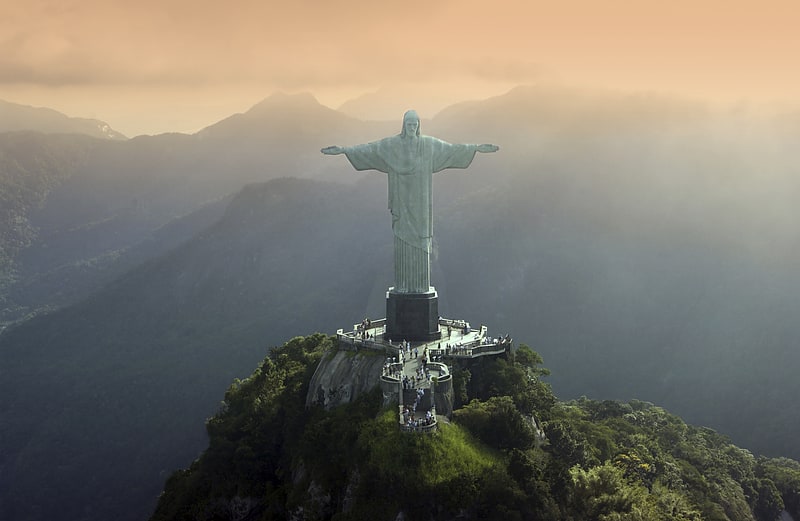
Also known as: Cristo Redentor
Iconic Christ statue atop a mountain. Christ the Redeemer is an Art Deco statue of Jesus Christ in Rio de Janeiro, Brazil, created by French sculptor Paul Landowski and built by Brazilian engineer Heitor da Silva Costa, in collaboration with French engineer Albert Caquot. Romanian sculptor Gheorghe Leonida fashioned the face. Constructed between 1922 and 1931, the statue is 30 metres high, excluding its 8-metre pedestal. The arms stretch 28 metres wide. It is made of reinforced concrete and soapstone.
The statue weighs 635 metric tons (625 long, 700 short tons), and is located at the peak of the 700-metre (2,300 ft) Corcovado mountain in the Tijuca National Park overlooking the city of Rio de Janeiro. A symbol of Christianity around the world, the statue has also become a cultural icon of both Rio de Janeiro and Brazil and was voted one of the New Seven Wonders of the World.[1]
Address: Estr. do Corcovado, s/n, 20531-540 Rio de Janeiro
Sugarloaf Mountain, Rio de Janeiro
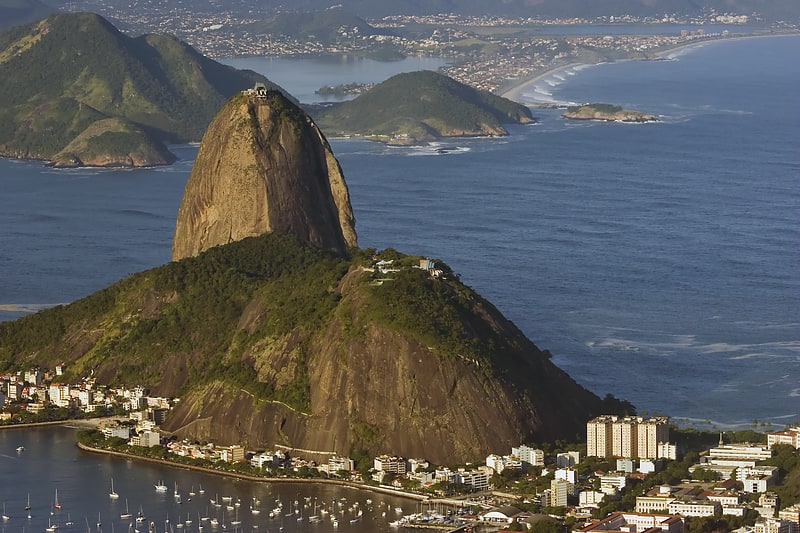
Also known as: Pão de Açúcar
Peak with a cableway and panoramic views. Sugarloaf Mountain is a peak situated in Rio de Janeiro, Brazil, at the mouth of Guanabara Bay on a peninsula that juts out into the Atlantic Ocean. Rising 396 m above the harbor, its name is said to refer to its resemblance to the traditional shape of concentrated refined loaf sugar. It is known worldwide for its cableway and panoramic views of the city and beyond.
The mountain is one of several monolithic granite and quartz mountains that rise straight from the water's edge around Rio de Janeiro. Geologically, it is considered part of a family of steep-sided rock outcroppings known as non-inselberg bornhardts.
The mountain is protected by the Sugarloaf Mountain and Urca Hill Natural Monument, created in 2006. This became part of a World Heritage Site declared by UNESCO in 2012.[2]
Address: Av. Pasteur, 520, 22290-255 Rio de Janeiro (Botafogo)
MAM, Rio de Janeiro
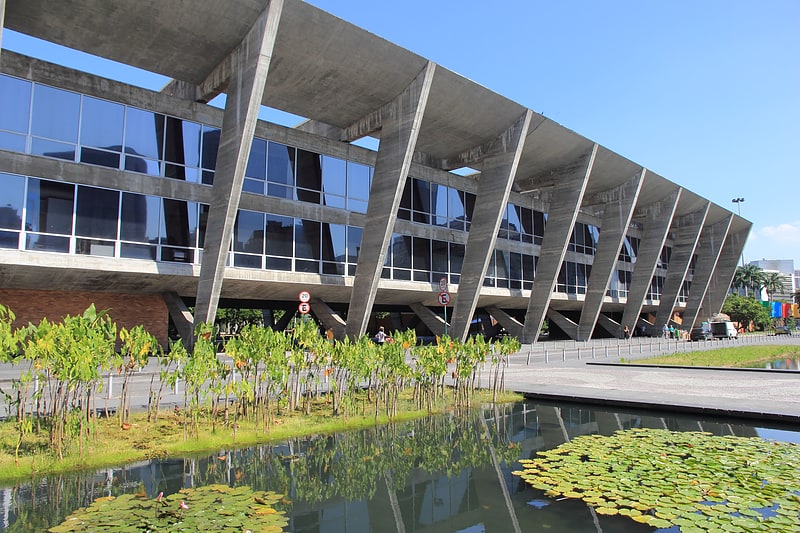
Also known as: Museu de Arte Moderna do Rio de Janeiro
Modern art museum with unique gardens. The Museum of Modern Art in Rio de Janeiro is a museum located in northeastern Flamengo Park, in the city of Rio de Janeiro, Brazil. It is in the Centro district, west of Santos Dumont Airport, on Guanabara Bay.[3]
Address: Av. Infante Dom Henrique, 85, 20021-140 Rio de Janeiro (Botafogo)
Casa Rosada, Buenos Aires
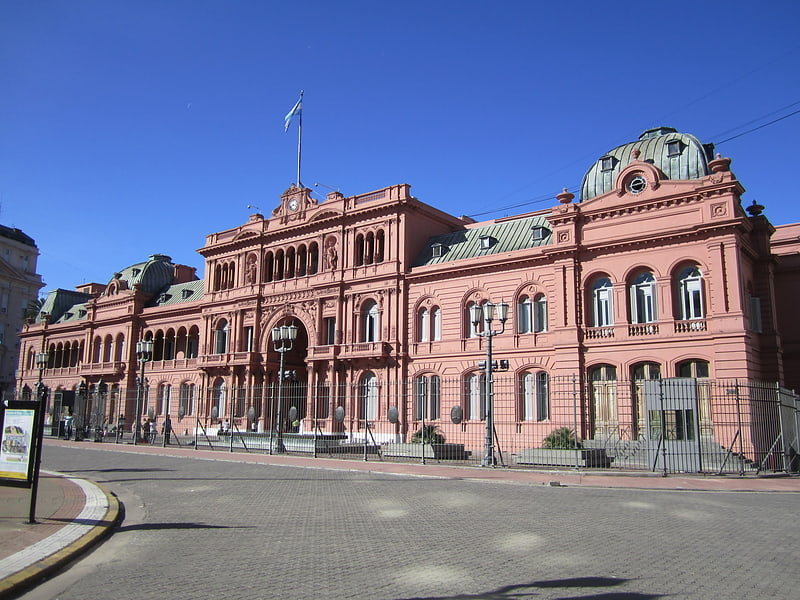
Famed presidential palace with tours. The Casa Rosada is the office of the President of Argentina. The palatial mansion is known officially as Casa de Gobierno. Normally, the President lives at the Quinta de Olivos, the official residence of the President of Argentina, which is located in Olivos, Greater Buenos Aires. The characteristic color of the Casa Rosada is baby pink, and is considered one of the most emblematic buildings in Buenos Aires. The building also houses a museum, which contains objects relating to former presidents of Argentina. It has been declared a National Historic Monument of Argentina.[4]
Address: Buenos Aires, Balcarce 50
Ibirapuera Park, São Paulo

Also known as: Parque Ibirapuera
Park in São Paulo, Brazil. Ibirapuera Park is an urban park in São Paulo. It comprises 158 hectares between Av. República do Líbano, Av. Pedro Alvares Cabral, and Av. IV Centenário, and is the most visited park in South America, with 14.4 million visits in 2017.
Ibirapuera Park was the first metropolitan park in São Paulo, designed along the lines of other great English landscape gardens built in the 20th century in major cities around the globe, but inspired on modern drafts from the landscape architect Roberto Burle Marx. It was inaugurated on 21 August 1954 for the 400th anniversary of the city of São Paulo with buildings designed by architect João Felipe Pereira and landscape by agronomist Otávio Augusto Teixeira Mendes. The construction of several pavilions in the park was controversial when the park was designed, and group of people advocated for an exclusively green park rather than one that included buildings. In the 90s, its green areas were graded heritage-listed status by the city and the state of São Paulo to avoid further construction and keep its historical gardens and green open spaces preserved. In 2016, the complex of buildings designed by Niemeyer in the park were also registered as national landmark by the National Historic and Artistic Heritage Institute.
Ibirapuera is one of Latin America's largest urban parks, together with Chapultepec Park in Mexico City and Simón Bolívar Park in Bogota, and its iconic importance to São Paulo is often internationally comparable to that of Central Park to New York City. The park is often cited as one of the most vibrant and photographed parks in the world, as together with its large area for leisure, jogging and walking, it hosts a vivid cultural scene with museums, a music hall, and popular events such as São Paulo Fashion Week, congresses and trade shows. It is claimed to be the most visited urban park in South America, is listed as one of the best parks in the world, and has been described as "a green oasis at the heart of a concrete jungle".
The park has been managed for decades by the city of São Paulo, but the local government plans to concession all its parks' management to private hands, starting with Ibirapuera Park. Since 2014, the park also has the support of the Ibirapuera Park Conservancy (Parque Ibirapuera Conservação), a strong community nonprofit that supports park stewardship and conservation actions through a capital improvement plan, engagement projects and volunteer work. Admission to the park has been free since 1954, and it is open from 5am until midnight every day.[5]
Address: Av. Pedro Álvares Cabral, 04094-050 São Paulo (Vila Mariana)
Museo Nacional de Bellas Artes, Buenos Aires
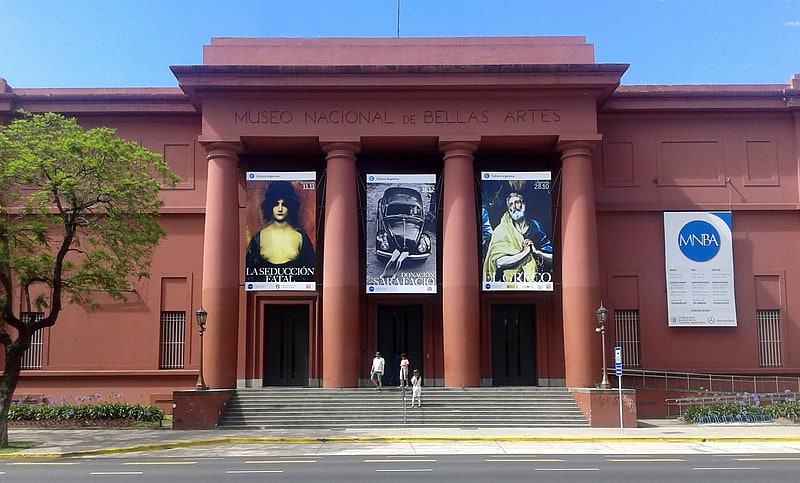
Museum in Buenos Aires, Argentina. The Museo Nacional de Bellas Artes is an Argentine art museum in Buenos Aires, located in the Recoleta section of the city. The Museum inaugurated a branch in Neuquén in 2004. The museum hosts works by Goya, Rembrandt, Van Gogh, Rodin, Manet and Chagall among other artists.[6]
Address: Avenida Del Libertador 1473, C1425AAA Buenos Aires
Pinacoteca do Estado de São Paulo, São Paulo
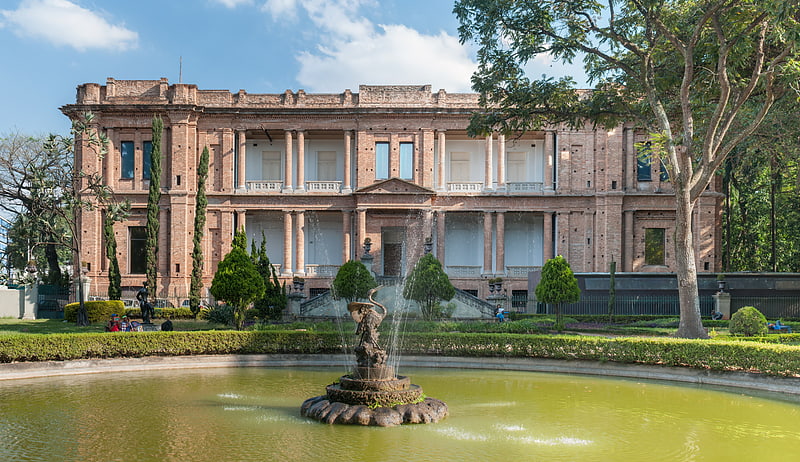
Established museum for Brazilian artwork. The Pinacoteca do Estado de São Paulo is one of the most important art museums in Brazil.[7]
Address: Praça da Luz, 2, 01120-010 São Paulo (Sé)
São Paulo Museum of Art, São Paulo
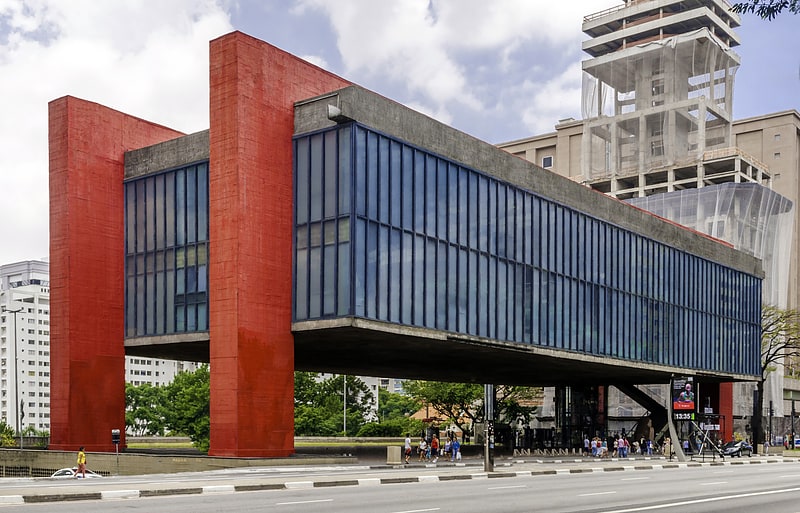
Also known as: Museu de Arte de São Paulo
Large collection by renowned artists. The São Paulo Museum of Art is an art museum located on Paulista Avenue in the city of São Paulo, Brazil. It is well known for its headquarters, a 1968 concrete and glass structure designed by Lina Bo Bardi, whose main body is supported by two lateral beams over a 74 metres freestanding space, considered a landmark of the city and a main symbol of modern Brazilian architecture.
The museum is a non-profit institution founded in 1947 by Assis Chateaubriand and Pietro Maria Bardi. MASP distinguished itself for many important initiatives concerning museology and art education in Brazil, as well as for its pioneering role as a cultural center. It was also the first Brazilian museum interested in post-World War II art.
The museum is internationally recognized for its collection of European art, considered the finest in Latin America and all Southern Hemisphere. It also houses an emphatic assemblage of Brazilian art, prints and drawings, as well as smaller collections of African and Asian art, antiquities, decorative arts, and others, amounting to more than 8,000 pieces. MASP also has one of the largest art libraries in the country. The entire collection has been named by Brazil's Institute of History and Art to the Brazilian National Heritage list.[8]
Address: Av. Paulista, 1578, 01310-200 São Paulo (Sé)
Buenos Aires Metropolitan Cathedral, Buenos Aires
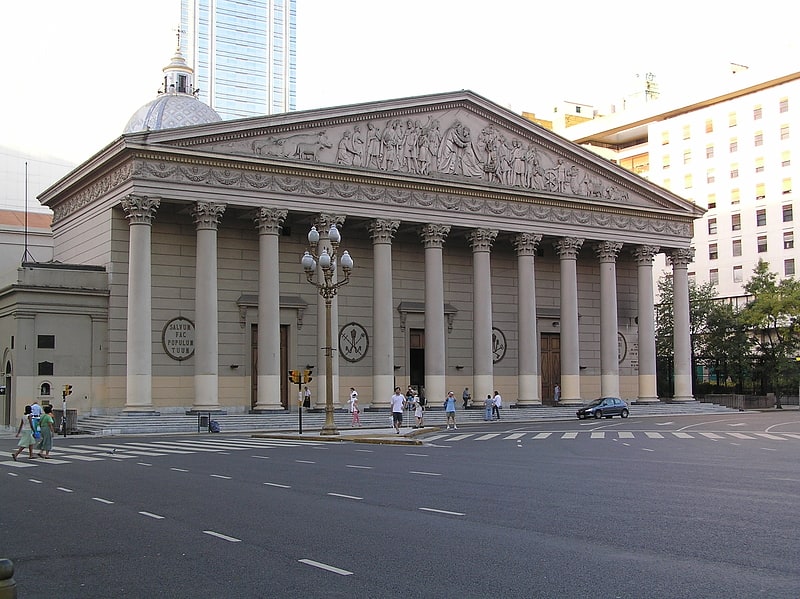
Also known as: Catedral metropolitana de Buenos Aires
Neoclassical Catholic cathedral. The Buenos Aires Metropolitan Cathedral is the main Catholic church in Buenos Aires, Argentina. It is located in the city center, overlooking Plaza de Mayo, on the corner of San Martín and Rivadavia streets, in the San Nicolás neighbourhood. It is the mother church of the Archdiocese of Buenos Aires and the primatial church of Argentina.
The Cathedral of Buenos Aires was rebuilt several times since its humble origins in the 16th century. The present building is a mix of architectural styles, with an 18th-century nave and dome and a severe, 19th-century Neoclassical façade without towers. The interior keeps precious 18th-century statues and altarpieces, as well as abundant Neo-Renaissance and Neo-Baroque decoration.[9]
Address: San Martín 27, C1004 CABA (Comuna 1)
Sacsayhuamán, Cuzco
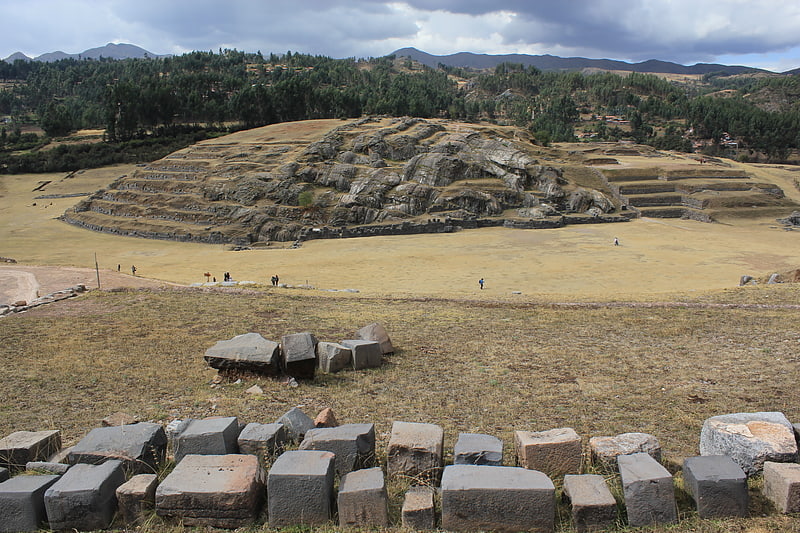
Inca complex known for its stone walls. Sacsayhuamán, which can be spelled many different ways, is a citadel on the northern outskirts of the city of Cusco, Peru, the historic capital of the Inca Empire.
The complex was built by the Inca in the 15th century, particularly under Pachacuti and successors. They built dry stone walls constructed of huge stones. The workers carefully cut the boulders to fit them together tightly without mortar. The site is at an altitude of 3,701 m (12,142 ft).
In 1983, Cusco and Sacsayhuamán together were designated as sites on the UNESCO World Heritage List, for international recognition and protection.[10]
Address: Ciudad del Cusco, Cuzco
Gold Museum, Bogotá
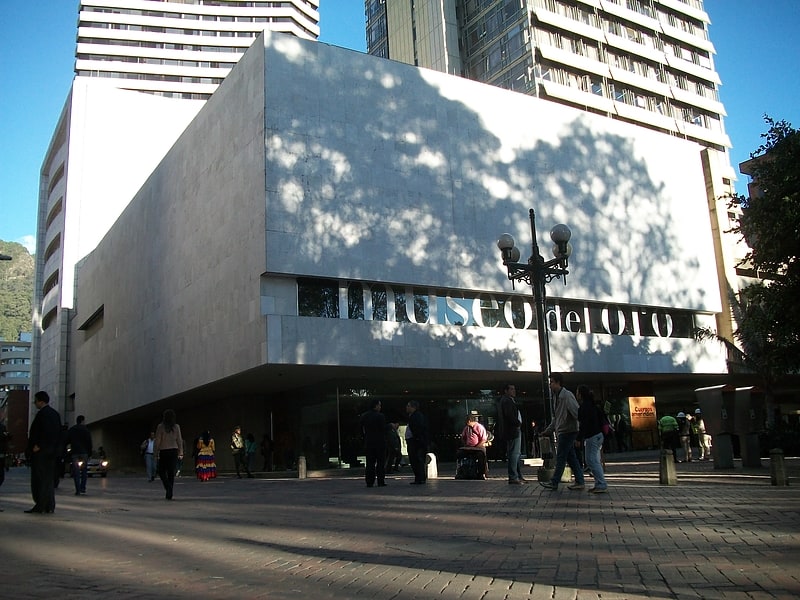
Also known as: Museo del Oro
Museum in Bogotá, Colombia. The Museum of Gold is a museum located in Bogotá, Colombia. It is one of the most visited touristic highlights in the country. The museum receives around 500,000 tourists per year.
The museum displays a selection of pre-Columbian gold and other metal alloys, such as Tumbaga, and contains the largest collection of gold artifacts in the world in its exhibition rooms on the second and third floors. Together with pottery, stone, shell, wood and textile objects, these items, made of a– to indigenous cultures – sacred metal, testify to the life and thought of the different societies which lived in present-day Colombia before the Spanish conquest of the Americas.[11]
Address: Cra. 6 ##15-88, 110321 Bogotá (Santa Fé)
Larco Museum, Lima

Also known as: Museo Arqueológico Rafael Larco Herrera
Museum of pre-Columbian artifacts. The Larco Museum is a privately owned museum of pre-Columbian art, located in the Pueblo Libre District of Lima, Peru. The museum is housed in an 18th-century vice-royal building. It showcases chronological galleries that provide a thorough overview of 5,000 years of Peruvian pre-Columbian history. It is well known for its gallery of pre-Columbian erotic pottery.[12]
Address: Av. Simón Bolivar 1515, 15084 Pueblo Libre (Lima Residencial)
Palácio do Planalto, Brasilia
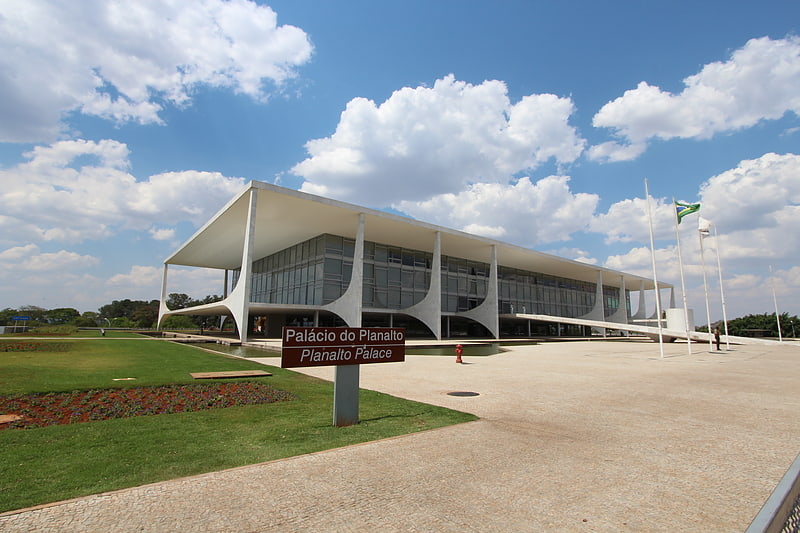
Iconic building with presidential office. The Palácio do Planalto in Brasília is the official workplace of the president of Brazil. The building was designed by architect Oscar Niemeyer in 1958 and inaugurated on April 21, 1960. It has been the workplace of every Brazilian president since Juscelino Kubitschek. It is located at the Praça dos Três Poderes, to the east of the National Congress of Brazil and across from the Supreme Federal Court.
It is one of the official palaces of the Presidency, along with the Palácio da Alvorada, the official residence. Besides the President, other high ranking government officials also work from the Planalto, including the Vice President and the Chief of Staff; the other government ministry buildings are located on the Ministries Esplanade. As the seat of government, the term Planalto is often used as a metonym for the executive branch of the federal government.
The building, constructed in the modernist style, is part of the Brasília World Heritage Site, designated by UNESCO in 1987.[13]
Address: Praça dos Três Poderes, 70150-900 Brasilia (RA I - Brasília)
Convent of Santo Domingo, Cuzco
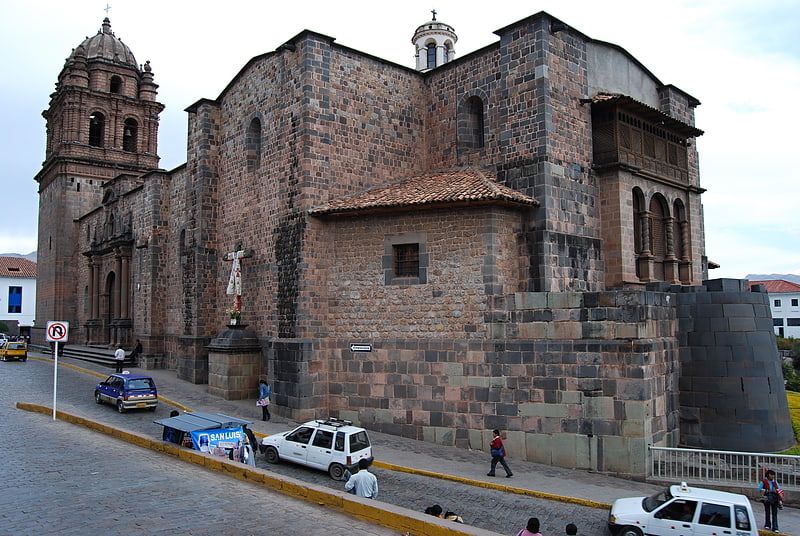
Catholic church in Cusco, Peru. The Convent of Santo Domingo is a convent of the Dominican Order in the city of Cusco, Peru. Spanish colonists built it on top of Coricancha, the most important Inca temple of the capital of the people's empire.[14]
Palácio da Alvorada, Brasilia
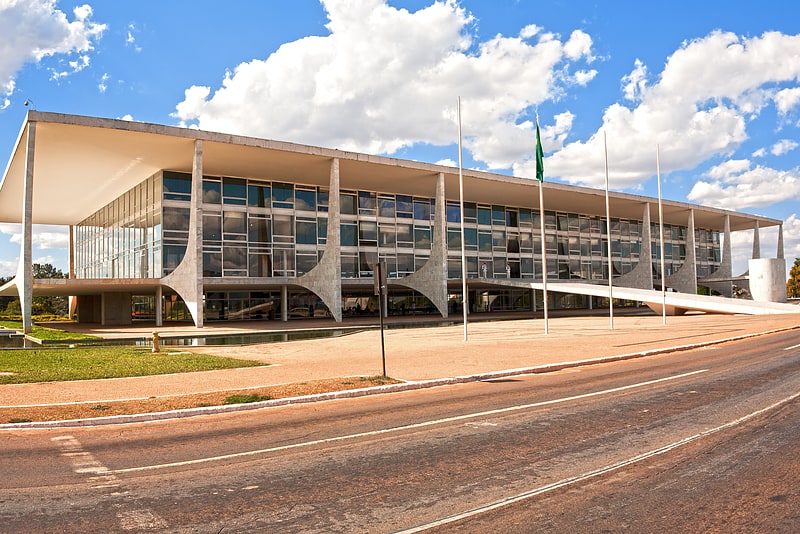
Modernist home of Brazil's president. The Palácio da Alvorada is the official residence of the President of Brazil. It is located in the national capital of Brasília, on a peninsula at the margins of Paranoá Lake. The building was designed by Oscar Niemeyer and built between 1957 and 1958 in the modernist style. It has been the residence of every Brazilian president since Juscelino Kubitschek. The building is listed as a National Historic Heritage Site.[15]
Address: Brasilia, Via Presidencial, Zona Cívico-Administrativa – CEP 70150-000
La Moneda, Santiago de Chile
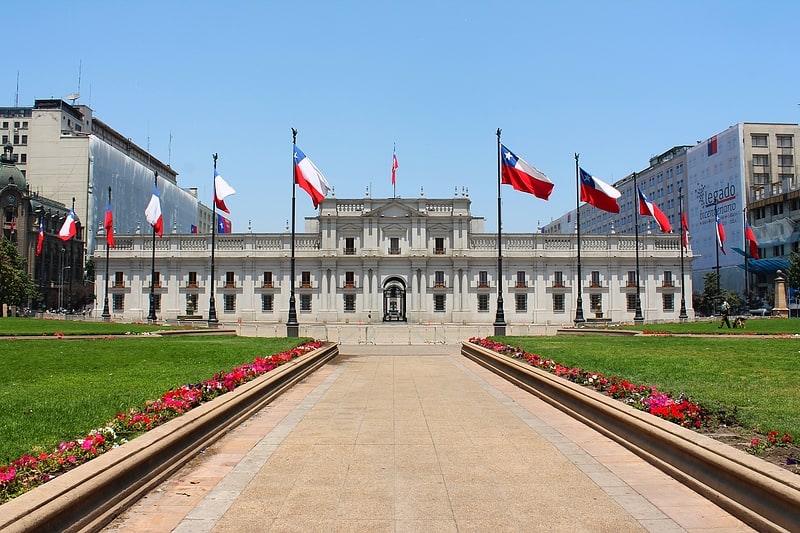
Stately office of Chile's president. Palacio de La Moneda, or simply La Moneda, is the seat of the President of the Republic of Chile. It also houses the offices of three cabinet ministers: Interior, General Secretariat of the Presidency and General Secretariat of the Government. It occupies an entire block in downtown Santiago, in the area known as Civic District between Moneda, Morandé, Alameda del Libertador Bernardo O'Higgins and Teatinos street.[16]
Address: Moneda S/N, Santiago de Chile (Santiago Centro)
Maloka, Bogotá
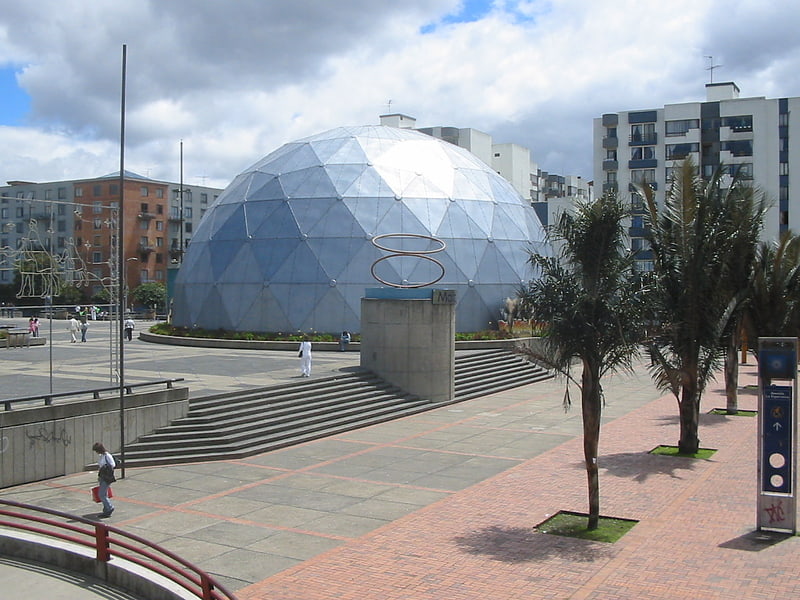
Science museum with a planetarium. The Maloka Museum is an interactive science museum located in Bogotá, Colombia. Visitors interact with a wide variety of exhibits that explore topics in Science and Technology.
The museum has 9 rooms, with different science and technology topics; the Telecommunications Room shows interactive games about Binary System, the Computers' language, How does the cellphone work or what's the communication process.
The next room is The City, it shows different modules where you can see 3D images of Bogotá with glasses, the development and history of the city and see a model of it where you can see all the buildings in it.
The Human is a room where visitors can explore the perfect machine, the human body.
The Universe room is one of the most popular rooms in the museum, where visitors can do experiments, such as knowing a person's weight in the planets of Solar System.
Petroleum, is other room located in the second floor, there one can see the process of exploring and exploiting that treasure, and its different kinds and characteristics.
The Water Room, show you through games the physic and chemical characteristics of that liquid; the others are the Biodiversity and Boys & Girls' room.
The museum has an Activity Zone with math games and activities too.
The museum has a dome theater where documentaries are shown.[17]
Address: Cra. 68d ###24A-51, 110931 Bogotá (Fontibón)
Angel Falls, Canaima National Park

Also known as: Salto Ángel
Highest waterfall in the world. Angel Falls is a waterfall in Venezuela. It is the world's tallest uninterrupted waterfall, with a height of 979 metres and a plunge of 807 m. The waterfall drops over the edge of the Auyán-tepui mountain in the Canaima National Park, a UNESCO World Heritage site in the Gran Sabana region of Bolívar State. The height figure, 979 m, mostly consists of the main plunge but also includes about 400 metres of sloped cascade and rapids below the drop and a 30-metre-high plunge downstream of the talus rapids.
The falls are along a fork of the Río Kerepacupai Merú which flows into the Churún River, a tributary of the Carrao River, itself a tributary of the Orinoco River.[18]
Cathedral of Brasília, Brasilia

Also known as: Catedral Metropolitana de Brasília
Cathedral featuring avant-garde design. The Cathedral of Brasília is the Roman Catholic cathedral serving Brasília, Brazil, and serves as the seat of the Archdiocese of Brasília. It was designed by Brazilian architect Oscar Niemeyer and calculated by Brazilian structural engineer Joaquim Cardozo, and was completed and dedicated on May 31, 1970. The cathedral is a hyperboloid structure constructed from 16 concrete columns, weighing 90 tons each.[19]
Address: Esplanada dos Ministérios, Lt. 12, 70200-610 Brasília (RA I - Brasília)
Museum of Modern Art of Bahia, Salvador
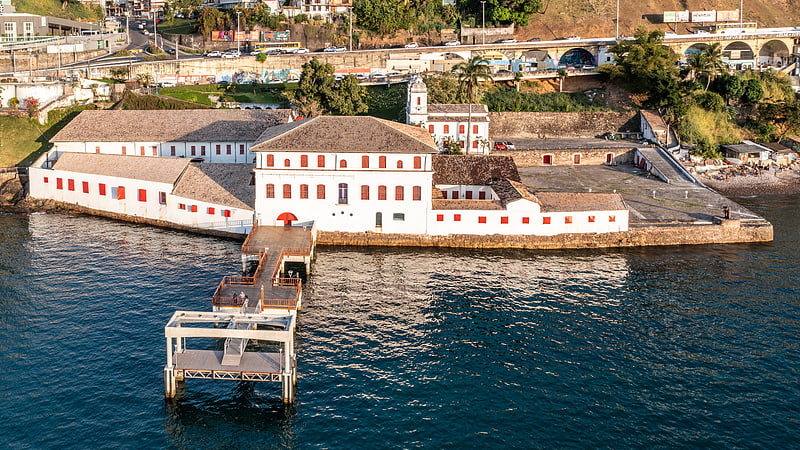
The Museum of Modern Art of Bahia is a modern art museum located in Salvador, Bahia, Brazil. It is located within Solar do Unhão, a historical site dating to the 16th century, on the margin of the Bay of All Saints. The museum was founded in 1960 under the architect Lina Bo Bardi and initially located in the foyer of the Castro Alves Theater; it moved to its present location in 1963. MAM-BA is one of twelve state museums linked to the Institute of Artistic and Cultural Heritage, an authority of the Department of Culture of the State of Bahia.
The collection of MAM-BA is noted for paintings, sculptures, photographs, and drawings by artists such as Tarsila do Amaral, Portinari, Flávio de Carvalho, Di Cavalcanti, Rubem Valentim, Pancetti, Carybé, Mário Cravo Neto, and Sante Scaldaferri. MAM-BA has eight exhibition rooms; a theater; a library; a technical space to house conservation, restoration, and museology; and an art workshop that offers open courses of painting, engraving techniques, ceramics, drawing, handmade paper, and sculpture to the community.[20]
Address: Av. Contôrno, s/n, 40301-155 Salvador (Centro)
Simón Bolívar Park, Bogotá
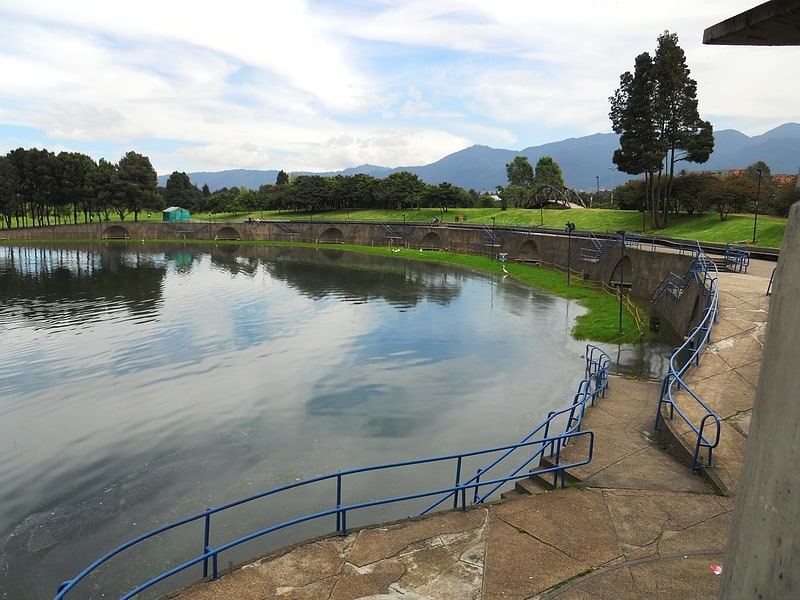
Also known as: Parque Metropolitano Simón Bolívar
Big city park with a lake and playground. The Simón Bolívar Metropolitan Park, best known as the Simón Bolívar Park, is a greenspace and entertainment and sports complex located in the middle of the city of Bogotá, Colombia.
The park is named after the Latin American Liberator Simón Bolívar. The park is located in the locality of Teusaquillo and is managed by the District Institute of Recreation and Sport (Instituto Distrital de Recreacion y Deporte - IDRD). The park is one of the most popular urban parks in the city of Bogotá.
The park features a lake in which people can rent paddle boats and a large space for concerts and events capable of holding 140.000 people.[21]
Address: Av. Calle 53 y Av. Esmeralda #s/n, 111321 Bogotá (Teusaquillo)
Government Palace, Lima
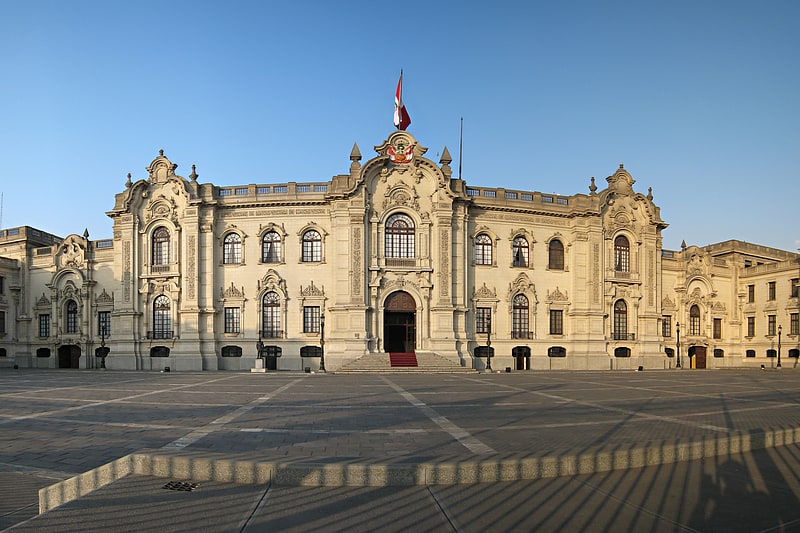
Also known as: Palacio de Gobierno del Perú
Palace and official presidential residence. The Government Palace, also known as the House of Pizarro, is the seat of the executive branch of the Peruvian Government, and the official residence of the President of Peru. The palace is a stately government building, occupying the northern side of the Plaza Mayor in Peru's capital city, Lima. Set on the Rímac River, the palace occupies the site of a very large huaca that incorporated a shrine to Taulichusco, the last kuraka of Lima.
The first Government Palace was built by Francisco Pizarro, governor of New Castile, in 1535. When the Viceroyalty of Peru was established in 1542, it became the viceroy's residence and seat of government. The most recent alterations to the building were completed in the 1930s, under the direction of President Oscar R. Benavides during his second term of office. The chief architects were Claude Antoine Sahut Laurent and Ricardo de Jaxa Malachowski.
A number of ceremonial guard units of the Peruvian Armed Forces are stationed at the Palace, and participate in the daily Changing of the Guard ceremony and other official duties.[22]
Address: Plaza Mayor, Lima (Lima Central)
Coricancha, Cuzco
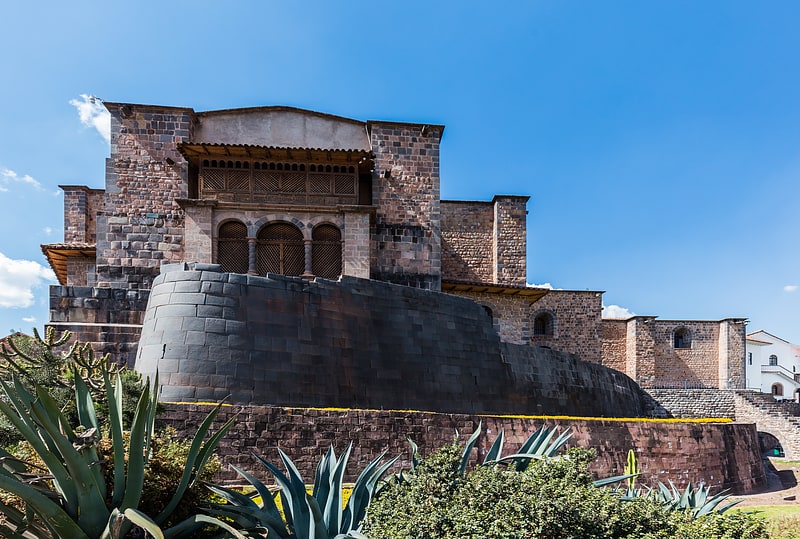
Ruins of an important Inca temple. Coricancha, Koricancha, Qoricancha or Qorikancha was the most important temple in the Inca Empire. It is located in Cusco, Peru, which was the capital of the empire.[23]
Address: Plazoleta de Santo Domingo, Cuzco
Carondelet Palace, Quito
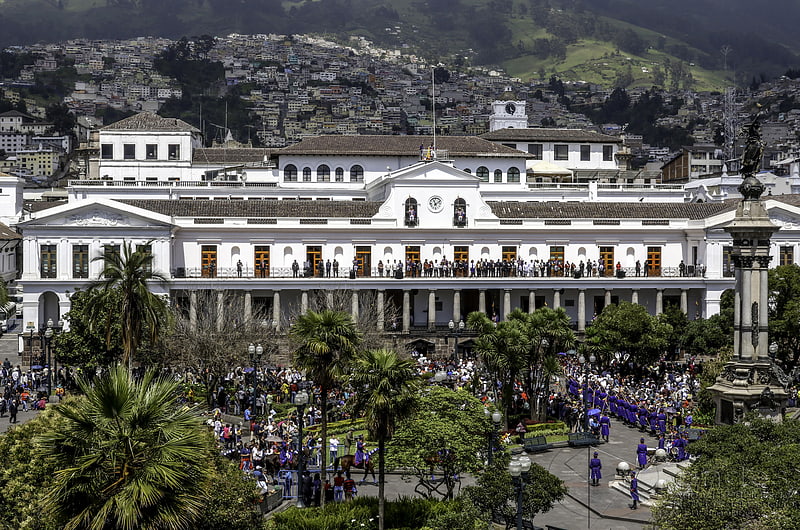
Also known as: Palacio de Carondelet
Palace in Quito, Ecuador. Carondelet Palace is the seat of government of the Republic of Ecuador, located in Quito. Access is by the public space known as Independence Square or Plaza Grande, around which are also the Archbishop's Palace, Municipal Palace, Hotel Plaza Grande, and Metropolitan Cathedral.[24]
Plaza de toros de Acho, Lima

Bullring in Rímac District, Peru. The Plaza de Toros de Acho is the premier bullring in Lima, Peru. Located beside the historical center of the Rímac District, the plaza is classified as a national historic monument. It is the oldest bullring in the Americas and the second-oldest in the world after La Maestranza in Spain. It opened on 30 January 1766.
Of the 56 official bullrings in Peru, the Plaza de Acho ranks most prominently. It has a seating capacity of 13,700 and was constructed of adobe and wood, both traditional materials.[25]
Address: Jr. Hualgayoc 332, Lima (Lima Central)
Cerro Santa Lucia, Santiago de Chile
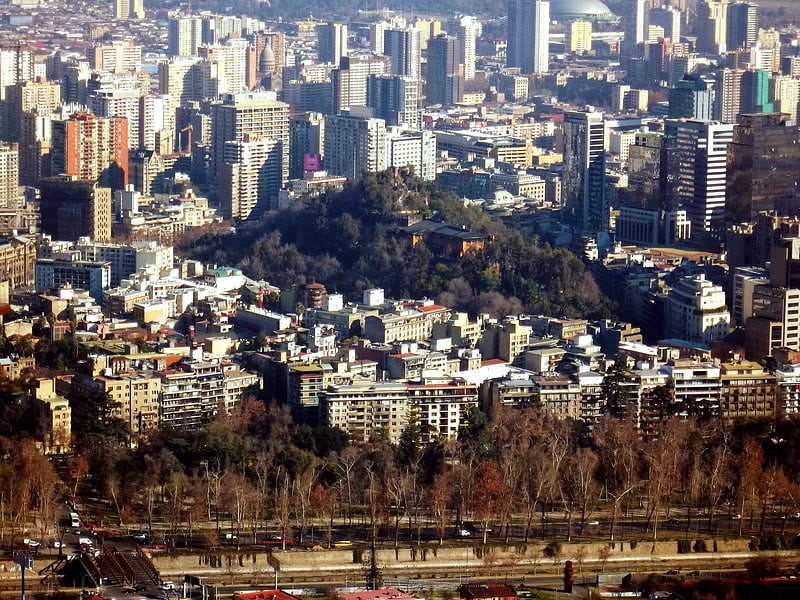
Also known as: Cerro Santa Lucía
Hill with a landscaped park and viewpoint. Santa Lucía Hill, also known in Mapuche as Huelén Hill, is a small hill in the centre of Santiago, Chile. It is situated between Alameda del Libertador Bernardo O'Higgins in the south, Santa Lucía Street in the west and Victoria Subercaseaux on the east. An adjacent metro station is named after it. The hill has an altitude of 629 m and a height of 69 m over the surrounding area. The hill is the remnant of a volcano 15 million years old.
The hill comprises a 65,300 square metre park adorned with ornate facades, stairways and fountains. At the highest point there is a viewpoint popular with tourists visiting the city.[26]
Address: Cerro Sta. Lucia 105, Santiago de Chile (Santiago Centro)
Edificio Armada de Chile, Valparaíso

The Edificio de la Comandancia en Jefe de la Armada de Chile, also known as Edificio de la Intendencia de Valparaíso, because it was a purpose-built Intendencia, is a building designed in an eclectic style with Renaissance Revival architecture elements, which rises 5 floors in height and covers 8,000 square metres. The main facade of the building faces the Plaza Sotomayor of Valparaíso and the Monument to the Heroes of Iquique.
The building has been the site of historical and social events, which were numerous and important. On January 23, 1979 it was declared a Historic Monument de Chile, at the same time both the Plaza Sotomayor and the surrounding buildings was declared a Zona Típica y de Protección.[27]
Address: 592 Sotomayor, Valparaíso
El Panecillo, Quito
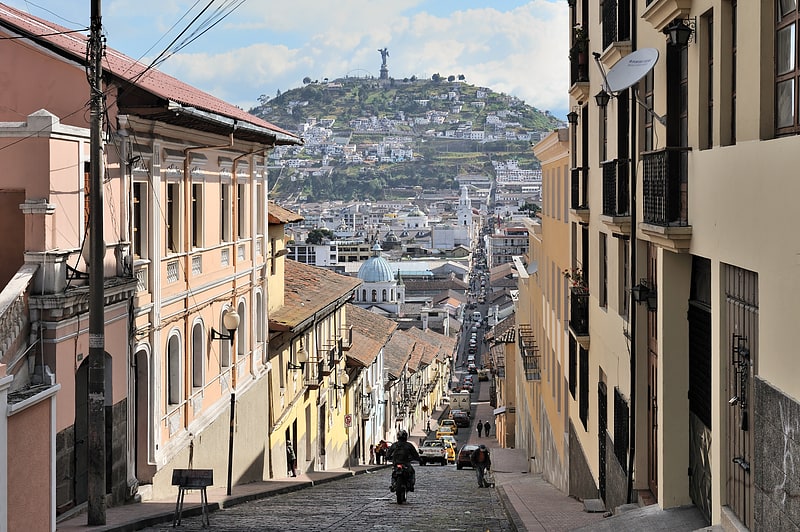
Hill in Ecuador. El Panecillo is a 200-metre-high hill of volcanic-origin, with loess soil, located between southern and central Quito. Its peak is at an elevation of 3,016 metres above sea level. The original name used by the aboriginal inhabitants of Quito was Yavirac. According to Juan de Velasco, a Jesuit historian, there was a temple on top of Yavirac where the Indians worshiped the sun until it was destroyed by the Spanish conquistadores. The street that leads up to El Panecillo is named after Melchor Aymerich.[28]
Address: Costado del Centro Historico, 170150 Quito (Centro Histórico)
Igreja do Bonfim, Salvador

Also known as: Igreja Nosso Senhor do Bonfim
Famed 18th-century Catholic church. The Church of Nosso Senhor do Bonfim is the most famous of the Catholic churches of Salvador, in the State of Bahia, Brazil. It was built in the 18th century on the only line of hills in the Itapagipe Peninsula, in the lower town of Salvador. The church is the subject of intense religious devotion by the people of Salvador and is the site of a famous celebration held every year in January, the Festa do Senhor do Bonfim. The church is the Cathedral of the Roman Catholic Diocese of Bonfim. The church is noted for the Festa do Bonfim, held annually the second Thursday after Three Kings Day. The festival combines elements of both Catholicism and Candomblé. It was listed as a historic structure by the National Historic and Artistic Heritage Institute in 1938.[29]
Address: Largo do Bonfim, s/n, 40415-475 Salvador (Itapagipe)
Fort of Monserrate, Salvador
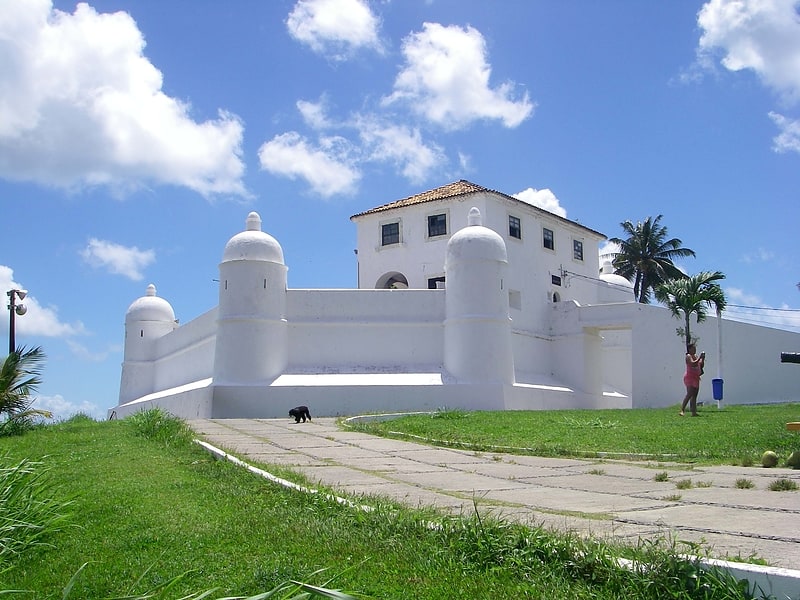
The Fort of Monserrate is a military fortification located in Salvador, Bahia in Brazil. It is also known as the Small Fort of Our Lady of Monserrate. It was known as the Forte de São Felipe from the time of its construction until the 19th century. The Fort of Monserrate was built between the end of the 16th century and early 17th century on the Itapagipe Peninsula. It is "one of the few Brazilian fortifications to retain its original appearance from the late 16th century." The fort is located above the Church and Monastery of Our Lady of Monserrate, one of the oldest church structures in Brazil. The fort was listed as a historic structure by the National Institute of Historic and Artistic Heritage in 1938.[30]
Address: R. da Boa Viagem, 471-593, 40414-610 Salvador (Itapagipe)
Botanical Garden of Curitiba, Curitiba
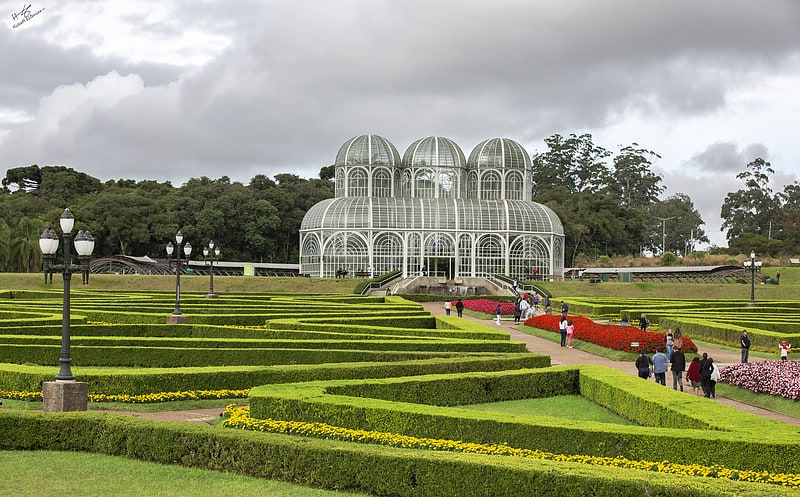
Also known as: Jardim Botânico de Curitiba
Modern garden for primarily native flora. The Jardim Botânico de Curitiba, in Portuguese, or the Botanical Garden of Curitiba, in English, also known as the "Jardim Botânico Fanchette Rischbieter", is a park located in the city of Curitiba - the capital of the state of Paraná, and the biggest city in southern Brazil. It is the major tourist attraction and landmark of the city, and it houses part of the campus of the Federal University of Paraná. The international identification code is CURIT.
Opened in 1991, Curitiba's trademark botanical garden was created in the style of French gardens. Once by the portal of entry, one may see extensive gardens in the French style amidst fountains, waterfalls and lakes, and the main greenhouse of 458 square meters, which shelters in its interior, specimens of plants characteristic of tropical regions. It rolls out its carpet of flowers to the visitors right at the entrance. The park occupies 240.000 m² in area. The principal greenhouse, in an art nouveau style with a modern metallic structure, resembles the mid-19th century Crystal Palace in London. The Botanic Museum, which provides a national reference collection of native flora, attracts researchers from all over the world. It includes many botanic species from the moist Atlantic Forests of eastern Brazil.
The native forest is filled with paths for strolling. Behind the greenhouse is the Museum of Franz Krajcberg, the Polish Brazilian artist who took up the cause of environmental conservation; with 1,320 square meters of area, divided into multimedia classrooms, an auditorium with 60 seats and lounge with several exhibitions of works donated by visual artists, represented by sculptures and reliefs, as well as photographs, videos, publications and educational materials.
In the other side of the park is the Botanical Museum, a wooden building whose main entrance is reached through a wooden bridge. The Botanical Museum of Curitiba has the fourth largest herbarium in the country. In front of the construction there is a pond with carp, turtles, herons, etc. and around the building there is a lake, an auditorium, a library, an expositions area, a theatre, tennis courts and a cycle track.[31]
Address: R. Engo. Ostoja Roguski, 80210-390 Curitiba (Regional Matriz)
Basílica del Voto Nacional, Quito
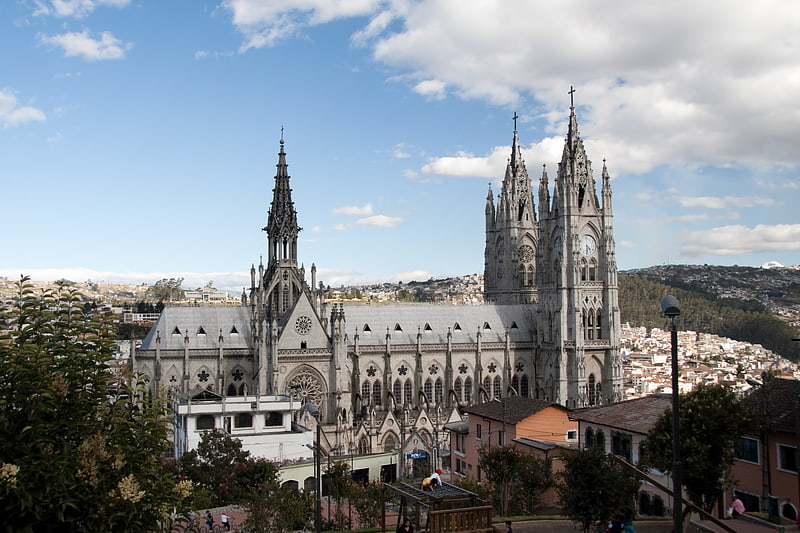
Catholic church in Quito, Ecuador. The Basilica of the National Vow is a Roman Catholic church located in the historic center of Quito, Ecuador. It is the largest neo-Gothic basilica in the Americas.[32]
Address: Carchi 122, Quito (San Juan)
Mercado Central, Santiago de Chile
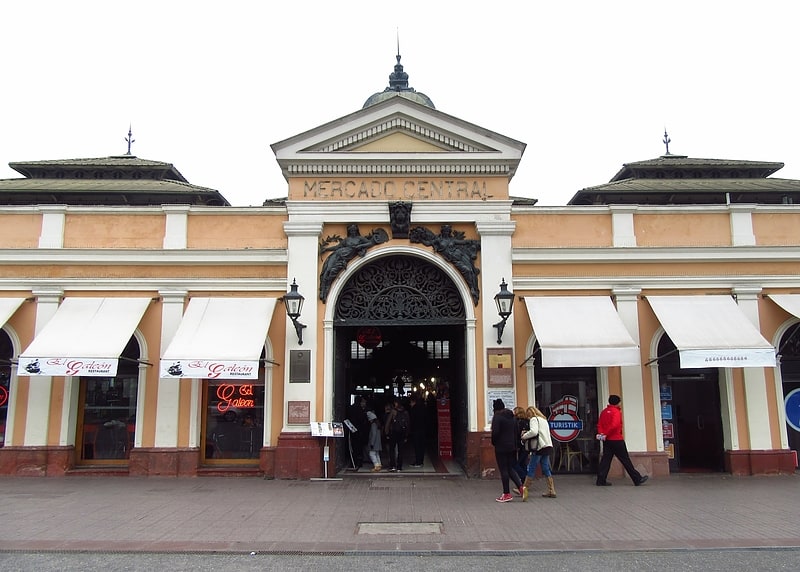
Market in Santiago, Chile. The Mercado Central de Santiago is the central market of Santiago de Chile. It was opened in 1872 and Fermín Vivaceta was in charge of its construction. The market replaced the Plaza del Abasto, which was destroyed by a fire in 1864.
The market is housed in a building in which its main feature is a cast-iron roof and supporting structure, which was fabricated by the Scottish firm R Laidlaw & Sons, Glasgow. Edward Woods and Charles Henry Driver took part in the design of the structure.
The metal structure stands on a square base and features a vaulted ceiling. Its intricate roof design consists of a central pyramidal roof crowned by a domed tower, which is surrounded by 8 smaller roofs with a two-tier design. The structure is enclosed by a masonry building.[33]
Address: San Pablo, Santiago de Chile (Santiago Centro)
Museu Oscar Niemeyer, Curitiba
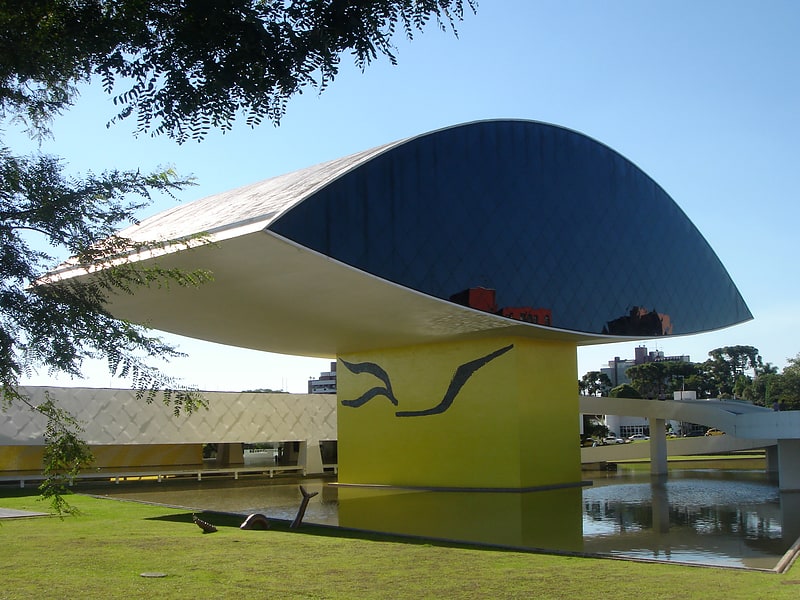
Contemporary art and design museum. The Oscar Niemeyer Museum is located in the city of Curitiba, in the state of Paraná, in Brazil. It was inaugurated in 2002 with the name Novo Museu or New Museum. With the conclusion of remodeling and the construction of a new annex, it was reinaugurated on July 8, 2003, with the current denomination to honor its famous architect who completed this project at 95 years of age. It is also known as Museu do Olho or Niemeyer's Eye, due to the design of the building.
The museum focuses on the visual arts, architecture and design. For its magnificence, beauty and for the importance of the collection, it represents a cultural institution of international significance. The complex of two buildings, installed in an area of 35 thousand square meters (of which 19 thousand are dedicated to exhibition space), it is a true example of architecture allied with art. The first building was designed by Oscar Niemeyer in 1967, faithful to the style of the time, and conceived as an educational institute, which was opened in 1978.
The museum features many of Niemeyer's signature elements: bold geometric forms, sculptural curved volumes placed prominently to contrast with rectangular volumes, sinuous ramps for pedestrians, large areas of white painted concrete, and areas with vivid murals or paintings. Though rooted in modern architecture since his involvement in the international style, Niemeyer's designs have much in common with postmodern architecture as well and this is as contemporary a building as the artwork it displays.[34]
Address: R. Mal. Hermes, 999, 80530-230 Curitiba (Regional Matriz)
Legislative Palace of Uruguay, Montevideo
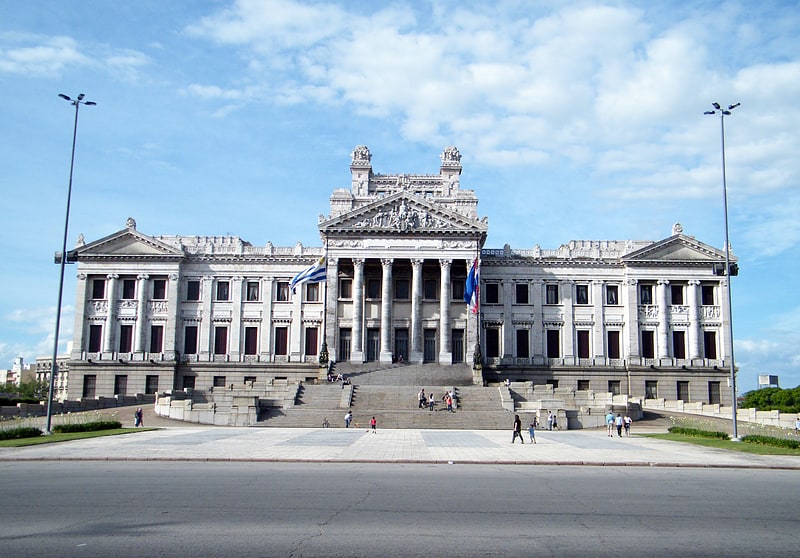
Also known as: Palacio Legislativo del Uruguay
Building in Montevideo, Uruguay. The Legislative Palace of Uruguay is a monumental building, meeting place of the General Assembly of Uruguay, and the seat of the legislative branch of the Uruguayan government. It is located in the barrio of Aguada in the city of Montevideo.
Constructed between 1908 and 1925, the building was inaugurated on August 25, 1925, in commemoration of the centenary of the Declaration of Independence. It was declared a National Historic Monument in 1975 by the government of President Juan María Bordaberry.[35]
Address: Av. de las Leyes, 11800 Montevideo (Centro Comunal Zonal 1)
Volcán de Agua, Antigua Guatemala
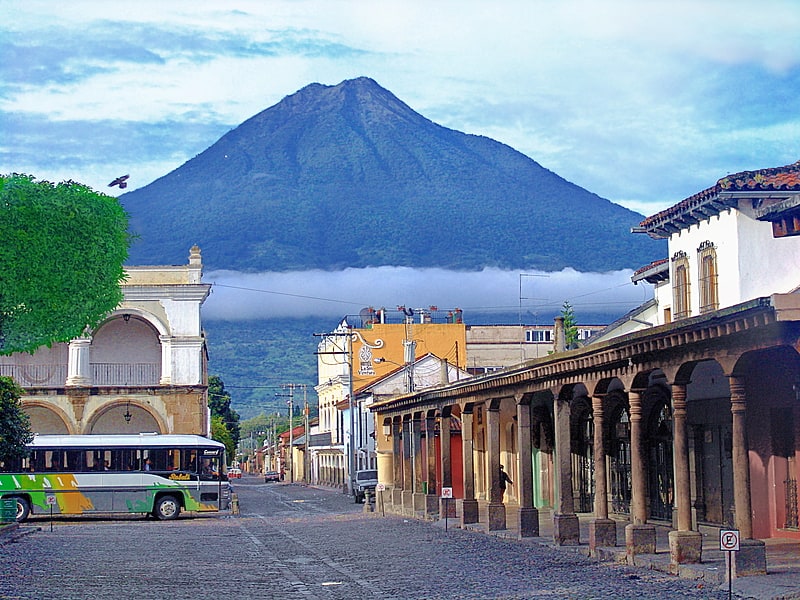
Stratovolcano in Guatemala. Volcán de Agua is a stratovolcano located in the departments of Sacatepéquez and Escuintla in Guatemala. At 3,760 m, Agua Volcano towers more than 3,500 m above the Pacific coastal plain to the south and 2,000 m above the Guatemalan Highlands to the north. It dominates the local landscape except when hidden by cloud cover. The volcano is within 5 to 10 km of the city of Antigua Guatemala and several other large towns situated on its northern apron. These towns have a combined population of nearly 100,000. It is within about 20 km of Escuintla to the south. Coffee is grown on the volcano's lower slopes.[36]
Castillo San Felipe de Barajas, Cartagena
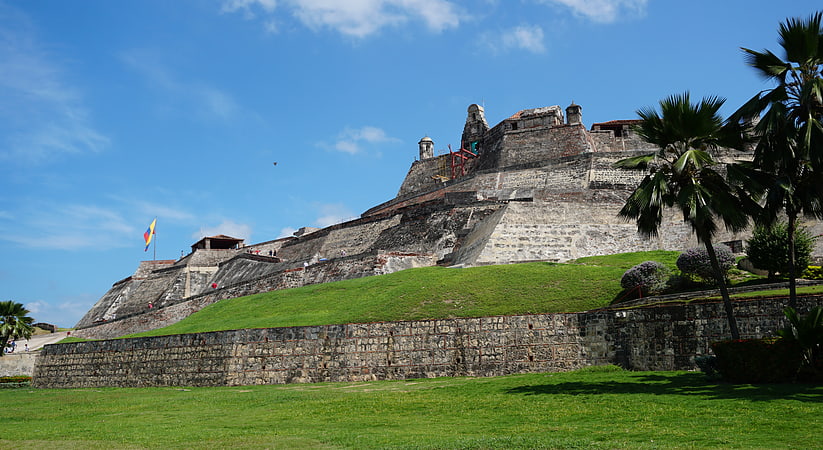
Iconic fortress with tunnels and a tour. The Castillo San Felipe de Barajas is a fortress in the city of Cartagena, Colombia. The castle was built in 1536 and is located on the Hill of San Lázaro in a strategic location, dominating approaches to the city by land or sea. It was originally known as the Castillo de San Lázaro. It was built by the Spanish during the colonial era. The fortress was involved in several battles between the late 17th to early 19th centuries involving European powers.[37]
Address: Cra. 17, 130001 Cartagena
Panama Canal locks, Panama City
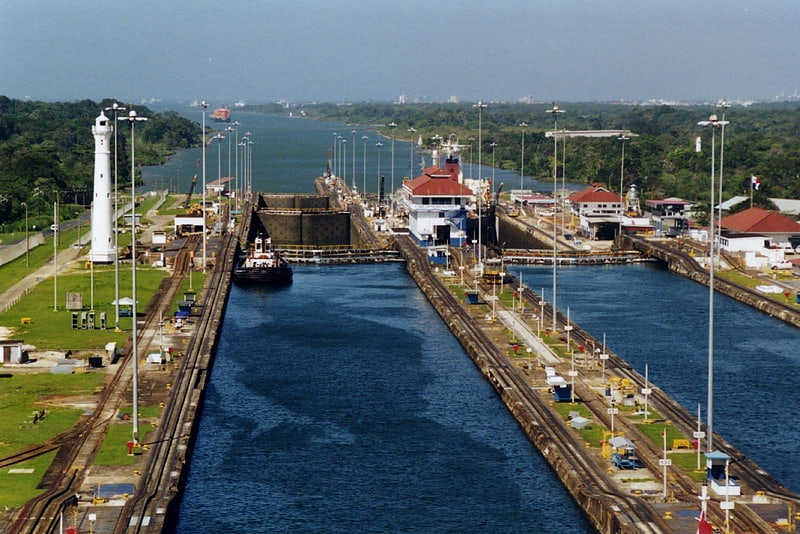
The Panama Canal locks are a lock system that lifts ships up 85 feet to the main elevation of the Panama Canal and down again. The original canal had a total of six steps for a ship's passage. The total length of the lock structures, including the approach walls, is over 1.9 miles. The locks were one of the greatest engineering works ever to be undertaken when they opened in 1914. No other concrete construction of comparable size was undertaken until the Hoover Dam, in the 1930s.
There are two independent transit lanes, since each lock is built double. The size of the original locks limits the maximum size of ships that can transit the canal; this size is known as Panamax. Construction on the Panama Canal expansion project, which included a third set of locks, began in September 2007, finished by May 2016 and began commercial operation on 26 June 2016. The new locks allow transit of larger, New Panamax ships, which have a greater cargo capacity than the previous locks were capable of handling.[38]
Santa Catalina Monastery, Arequipa
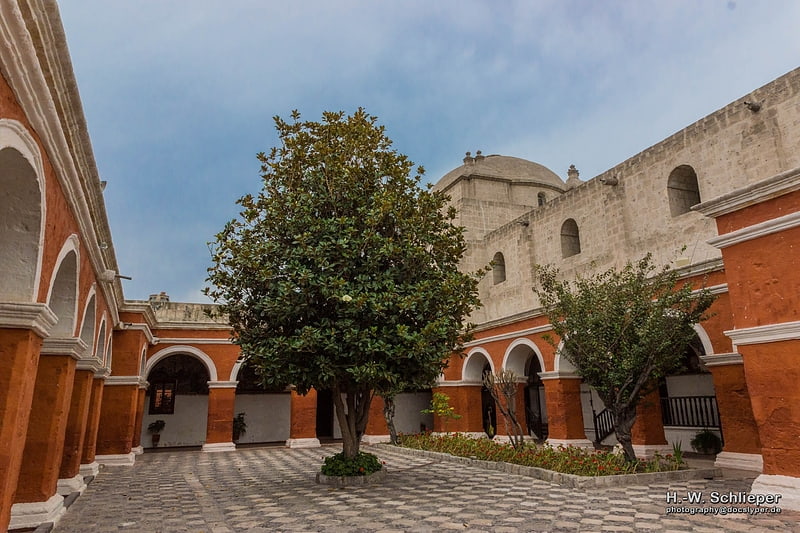
Also known as: Monasterio de Santa Catalina de Siena
Dominican monastery offering tours. The Monastery of Santa Catalina de Siena is a monastery of nuns of the Dominican Second Order, located in Arequipa, Peru.[39]
Address: Santa Catalina 301, 04001 Arequipa
Iglesia de Santo Domingo, Cartagena
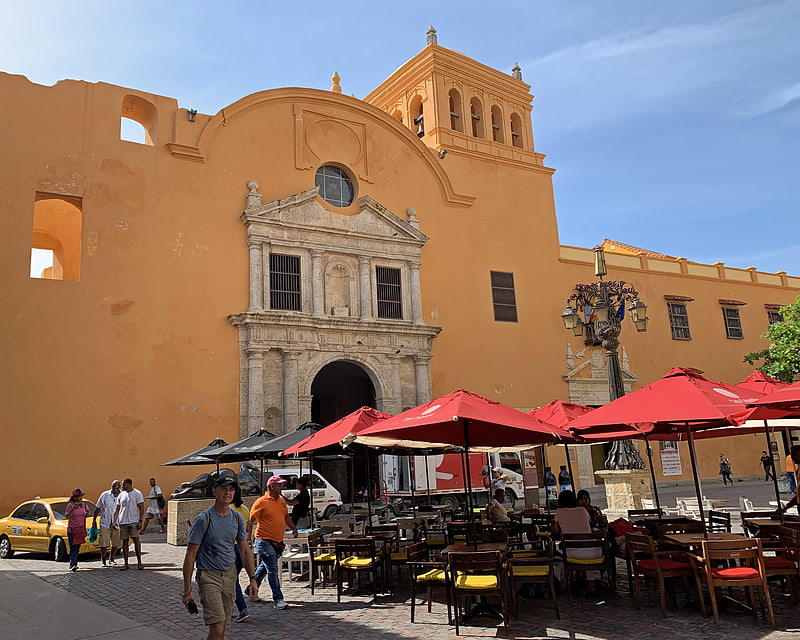
Convent. The Convento de Santo Domingo is a convent established from the 16th century in the city of Cartagena de Indias, in Colombia. Its canonical name was "Convento de San Daniel". Until 19th century maintained a community of friars of the Dominican Order. The building was then expropriated and handed over to the diocese of Cartagena, serving as a seminary, college and then institute of fine arts. It was recently restored. It is one of the most important tourist sites in the city.[40]
Address: Plaza de Santo Domingo, Cartagena
Palacio Salvo, Montevideo
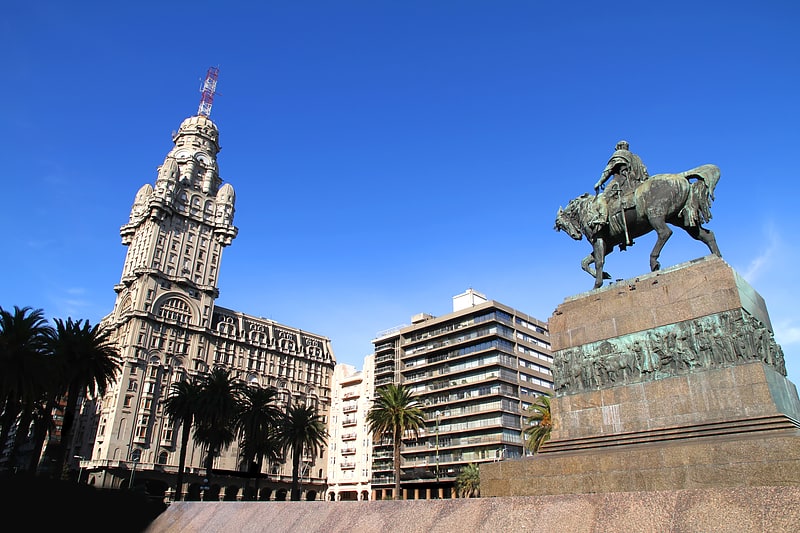
Architecturally significant building. Palacio Salvo is a building in Montevideo, Uruguay, located at the intersection of 18 de Julio Avenue and Plaza Independencia. It was designed by the architect Mario Palanti, an Italian immigrant living in Buenos Aires, who used a similar design for his Palacio Barolo in Buenos Aires, Argentina. Finished in 1928, Palacio Salvo stands 100 m high with the antenna included. It was the tallest building in Latin America for a brief period.[41]
Address: Plaza Independencia 848, 11000 Montevideo (Centro Comunal Zonal 1)
Fundação Iberê Camargo, Porto Alegre
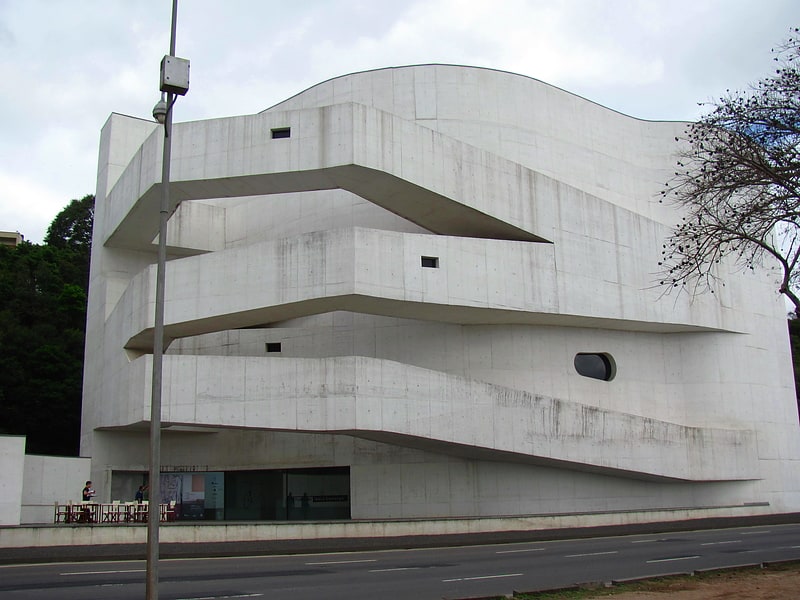
Sleek museum devoted to Iberê Camargo. The Iberê Camargo Foundation is a cultural institution and museum located in Porto Alegre, Brazil. The Foundation is dedicated to preserving and promoting the work of Brazilian painter Iberê Camargo.[42]
Address: Av. Padre Cacique, 2000, 90810-240 Porto Alegre (Centro)
Miraflores, Panama City
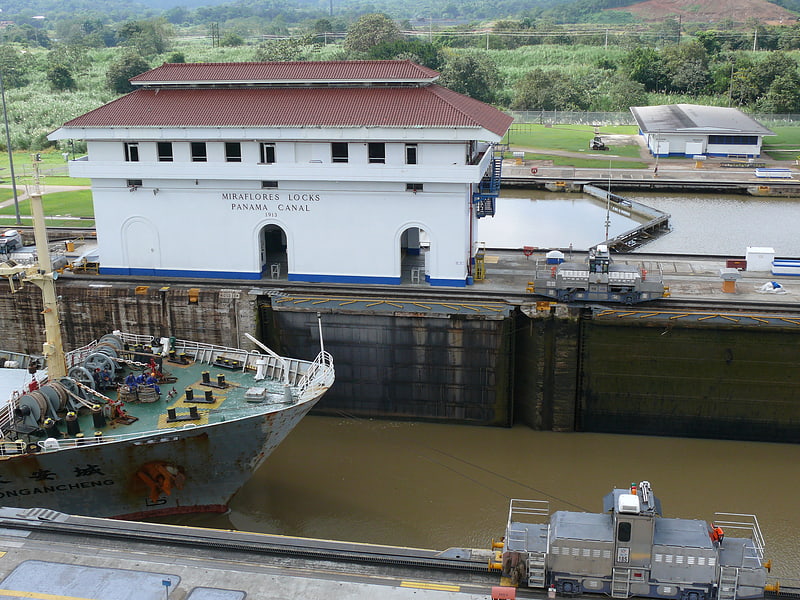
Visitor center in Panama City. Miraflores is the name of one of the three locks that form part of the Panama Canal, and the name of the small lake that separates these locks from the Pedro Miguel Locks upstream. In the Miraflores locks, vessels are lifted 54 feet in two stages, allowing them to transit to or from the Pacific Ocean port of Balboa in Panama City. Ships cross below the Bridge of the Americas, which connects North and South America.
As of 2005, the following schedule was in effect for ship transit through the locks: From 06:00 to 15:15, ships travel from the Pacific toward the Atlantic. From 15:45 to 23:00, ships travel from the Atlantic toward the Pacific. At any other time, travel is permitted in both directions.
A visitors center allows tourists to have a full view of the Miraflores locks operation. Binoculars are recommended to view the Pedro Miguel locks in the distance. As of 2016, admittance for adults to the visitors center costs US$15 (observation terrace) with lower rates for children and senior citizens. Panamanian residents are admitted at US$3 per person. Viewing a transit operation at the centre can take more than 30 minutes. A souvenir shop on the ground level sells related merchandise. The centre closes at 17:00.[43]
Antigua Guatemala Cathedral, Antigua Guatemala
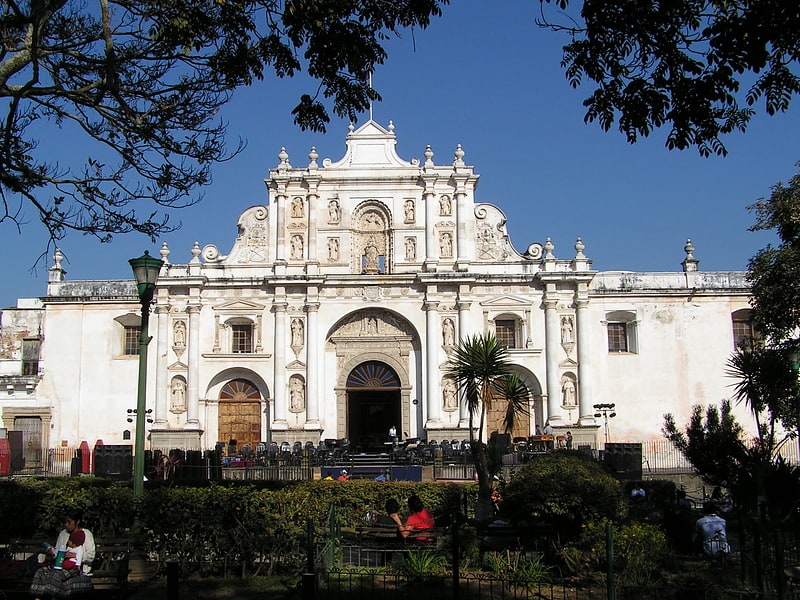
Also known as: Catedral de San José
Remains of an imposing 1540s cathedral. Antigua Guatemala Cathedral is a Latin Catholic church in Antigua Guatemala, Guatemala. The original church was built around 1541, but suffered several earthquakes throughout its history, and the first church building was demolished in 1669. The cathedral was rebuilt and consecrated in 1680. By 1743 the cathedral was one of the largest in Central America. However, the devastating 1773 Guatemala earthquake seriously damaged much of the building, though the two towers at the front remained largely intact. These have undergone restoration work, and the cathedral has been partly rebuilt[44]
Address: 4a. Avenida, Antigua Guatemala
Castle of San Luis de Bocachica, Cartagena
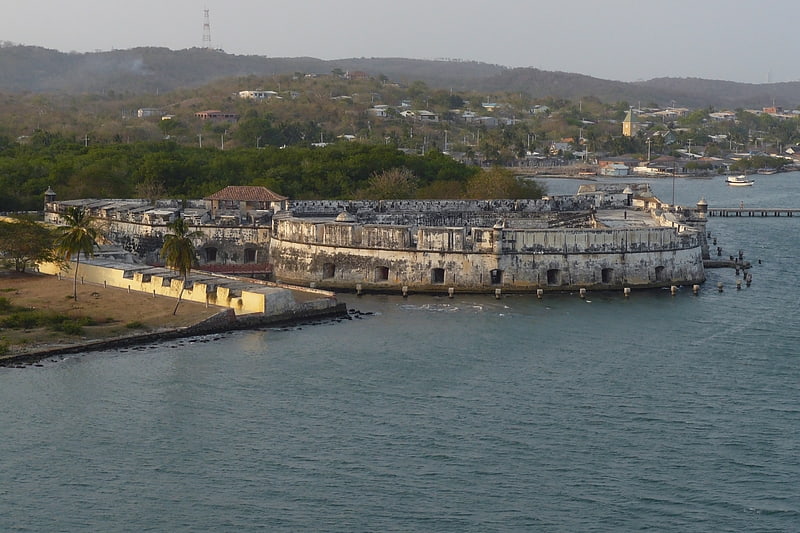
The Castle of San Luis de Bocachica, was a military fortress that defended Cartagena, Colombia. The Spanish built it in the 17th century. After it suffered war damage in the 18th century, they erected a new coastal fortification, the Castle of San Fernando on the same site.
The site on the Island of Tierra Bomba controlled deep-water access to Cartagena's harbour by the channel of Bocachica (or "small entrance" as opposed to Bocagrande, the "big entrance").[45]
Porto Alegre Public Market, Porto Alegre
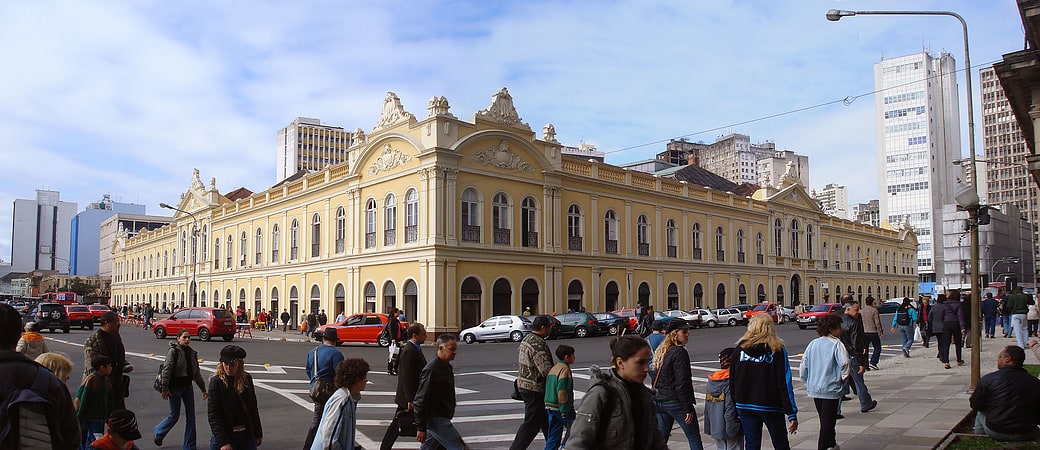
Also known as: Mercado Público de Porto Alegre
Market in Porto Alegre, Brazil. The Porto Alegre Public Market, in downtown Porto Alegre, Brazil, is the city's oldest public market. It also is an important historic landmark and a well-known meeting point, with many coffee shops and restaurants.
The cornerstone was laid on 29 August 1864, and it was constructed over an earlier and smaller market. Frederico Heydtmann designed the building, but his plan was substantially altered and enlarged. The inauguration took place on 3 October 1869. In 1886, 24 small shops were installed in the inner yard.
In 1912, while undergoing renovation, a fire destroyed all the stalls in the inner area. A second floor was added by 1913. The market suffered from a major flood in 1941, and from additional fires in 1976, 1979 and 2013. In the administration of Telmo Thompson Flores, it ran the risk of being demolished, but the outcry led to the reconsideration of the decision.
In 1990 the City administration organized a multidisciplinary team to develop a Restoration Project, which focused on the following goals:
- Rescue of the aesthetic quality of the building;
- Optimizing supply potentials;
- Creation of spaces of sociability.
The works included a modern structure of steel and glass to cover the large area of the inner yard, regained the visual perception of the inner arcades, renewed the internal circulations, created new living spaces, and deployed network infrastructure needed to handle the daily activities of a large and busy market.
The new cover allowed the integration between the ground floor and second floor. The second floor, where there were offices and public offices before, now has several popular establishments such as restaurants, snack bars, and coffee shops. With the works, the market also expanded its number of shops. The inauguration took place on 19 March 1997.
The Public Market is part of the traditions of the city, mainly for its "Banca 40" (an ice cream parlor), its centenary restaurant Gambrinus and one of the most traditional bars in town, the 101 years old Bar Naval (Navy Bar). There are about 109 shops, selling fresh produce and baked goods, locally raised meats and dairy products, and various other food items and also handcrafted goods. There are over 100,000 items for sale.
On 6 July 2013, the Public Market caught fire again. The fire is believed to have started at 20h30 on the upper floor at the corner of Avenida Borges de Medeiros and Júlio de Castilhos. Recent reports say that no people were injured, but 30% of the structure appeared to have burned down.[46]
Address: Mercado Público de Porto Alegre, 90020-070 Porto Alegre (Centro)
Ciudad Vieja, Montevideo
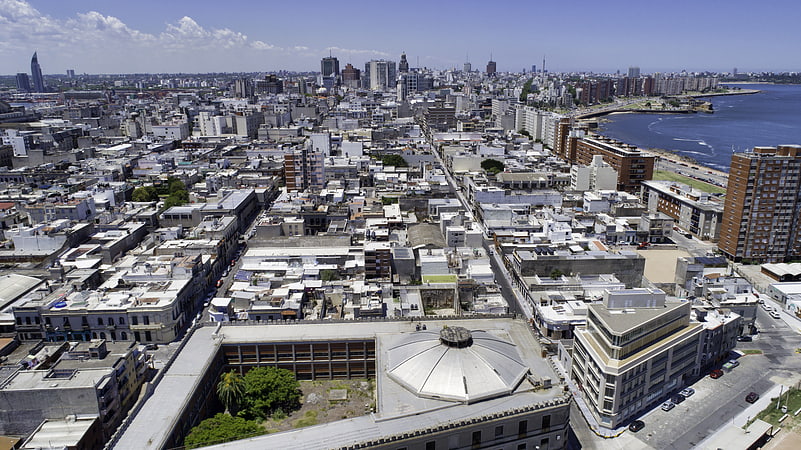
Neighbourhood in Montevideo, Uruguay. Ciudad Vieja is a historic neighbourhood in Montevideo, the capital of Uruguay. Located in a peninsula at the entrance of the natural port of Montevideo it was founded in 1724 as a walled city by the Spanish Empire, after the independence of Uruguay the city rapidly grew outwards and the Ciudad Vieja remained as one of the central neighbourhoods, nowadays it serves as one of the main office districts of Montevideo, housing multiple banks and institutions, but also as one of main tourist attractions in Uruguay due to its historical significance and classical architecture.[47]
Acatenango, Antigua Guatemala

Stratovolcano in Guatemala. Acatenango is a stratovolcano in Guatemala, close to the city of Antigua. The volcano has two peaks, Pico Mayor and Yepocapa which is also known as Tres Hermanas. Acatenango is joined with Volcán de Fuego and collectively the volcano complex is known as La Horqueta.[48]
Address: Volcan Acatenango, 03001 Antigua Guatemala
Igreja de São Francisco de Assis, Belo Horizonte

Modern Catholic church completed in 1943. The Church of Saint Francis of Assisi is a chapel in Pampulha region of Belo Horizonte, in the state of Minas Gerais, southeastern Brazil. It was designed by the Brazilian architect Oscar Niemeyer in the organic modern style. It is the first listed modern architectural monument in Brazil and consists of four undulating concrete parabolas with outdoor mosaics. The interior hosts a mural by Candido Portinari, and the exterior features a landscape designed by Roberto Burle Marx.
The curved lines of the church enchanted artists and architects, but scandalized the city's conservative culture. Despite its completion in 1943 and Juscelino Kubitschek's call for its consecration, the church was not consecrated until 1959. For 14 years, the ecclesiastical authorities, led by Antonio dos Santos Cabral, prohibited the chapel from providing Catholic services.
As of July 2016, the church is classified as a UNESCO World Heritage Site, part of the Pampulha Modern Ensemble, a collection of Niemeyer buildings in Pampulha.[49]
Address: Av. Otacílio Negrão de Lima, 3000, 31555-200 Belo Horizonte (Pampulha)
Autódromo Internacional de Curitiba, Curitiba
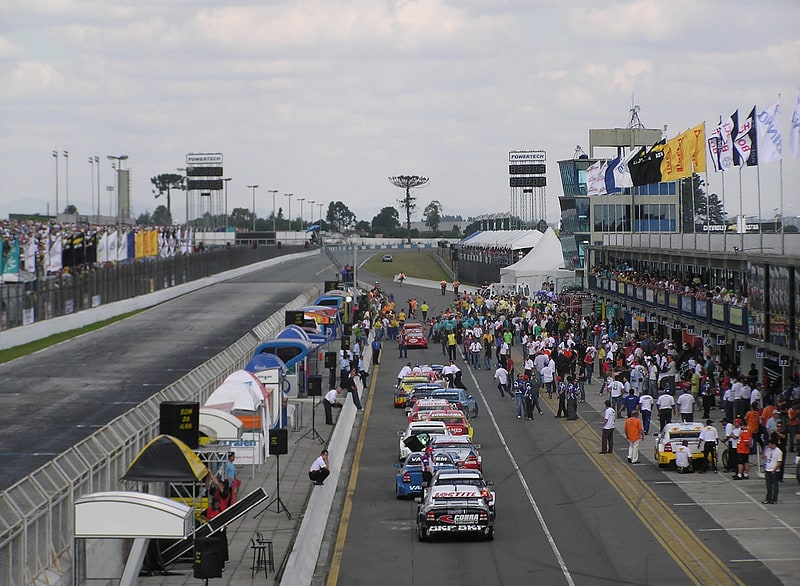
Car racing track in Pinhais, Brazil. Autódromo Internacional de Curitiba was a motorsports circuit located in Pinhais, Brazil. It has been host to the World Touring Car Championship, TC2000, Fórmula Truck and Stock Car Brasil racing. Until 2013 the circuit has also been host of the South American Formula 3 Series, namely the Formula 3 Sudamericana. The circuit also formerly hosted the Brazilian Formula Three Championship.
The circuit also hosted the "Festival Brasileiro de Arrancada", from 1992 to 2016, which was the biggest drag racing event in Latin America.[50]
Address: Avenida Irai 16, 83321-000 Pinhais